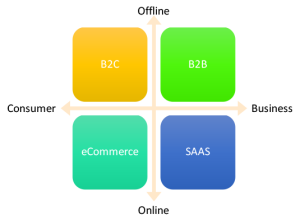
The story of AFLAC’s duck is a great story. AFLAC’s CEO takes a chance on a crazy advertising idea: a duck that quacks the name of his company. Company name recognition goes from about 2% to higher than 90%, revenues go through the roof, he adapts the idea to a different culture, and achieves the same business success in Japan. In many ways, it’s a story that illustrates the basic principles of traditional marketing: customers have to be aware of your product before you have a chance to sell to them, and brand matters. A lot.
But the story also illustrates some of the basic tenants of Agile Marketing.
Validated Learning over Opinions and Conventions
Daniel Amos, the CEO of AFLAC, didn’t “shoot from the hip” or “trust his gut” when he made the decision to go with the duck commercials. He tested them, and had solid data to support the commercial’s ability to raise AFLAC’s name recognition. And rather than go with the conventional approach, and the advice of his fellow CEO, who said “Nobody ever got fired for doing 50% better. Go with the safe choice”, he went with his validated learning over opinions and conventions.
Adaptive and iterative campaigns over big-bang campaigns
When he began the AFLAC duck campaign, Daniel Amos spent a modest amount, only what AFLAC could afford to lose. Even though they had data to support that the advertisements increased name recognition in focus groups, his initial approach was a small experiment. Only when he got back data on the success of the campaign did he expand it.
AFLAC’s CEO took a similar approach when he took the concept to the Japanese market. He started small, dubbing a U.S. commercial. Unsurprisingly, the dubbed U.S. commercial didn’t work. But by adapting and iterating on the basic concept, he made it work in Japan. The jingle from the commercial became the number one downloaded ring tone in Japan, and on the business side, AFLAC became the number one insurance company in terms of number of policies in force, ousting a 100-year old incumbent from that position.
Don’t Be Afraid to Fail; Just Don’t Fail the Same Way Twice
The CEO’s approach to bringing the duck to Japan also illustrates the Agile Marketing concept that failure is acceptable: don’t be afraid to fail, just don’t fail the same way twice. The duck initially failed in Japan. Ducks don’t say “Quack” in Japanese, they say “ga-ga”. The American duck was too aggressive. Ignoring the duck, as people do in the American commercials, is considered very rude in Japan. All these things needed to be overcome through initial failure, followed by adaptation and persistence.
Build Marketing Programs Around Motivated Individuals
I love the part of the story where he motivates the Japanese market marketing director. The Japanese director felt no need to adopt the duck in Japan, and felt that it wouldn’t work in the Japanese culture. Rather than ordering the guy to follow his orders, the CEO decided to offer him a $50,000 bonus if he could make the concept work in the Japanese market. That motivation worked wonders; to quote Daniel Amos, “angels must have come down and spoken to him, because lo and behold, he decided it might be a good idea to try the duck.”
AFLAC’s Duck as Case Study
Agile Marketing is new, but in many ways, it’s not new. It represents some basic principles that have been followed by good CEOs and good marketers for a number of years. AFLAC is just one example. I’d love to hear about more examples from my readers. Send me mail. Post in the comments.





Pingback: What AFLAC’s Duck Teaches Us About Agile MarketingDAM Foundation Creating the standards in digital asset management
Pingback: What AFLAC’s Duck Teaches Us About Agile MarketingDAM Foundation Creating the standards in digital asset management
“Don’t Be Afraid to Fail; Just Don’t Fail the Same Way Twice” is the justification for many iterative small experiments. Fails often, fail early, but never stop testing!
“Don’t Be Afraid to Fail; Just Don’t Fail the Same Way Twice” is the justification for many iterative small experiments. Fails often, fail early, but never stop testing!
I’m currently an undergrad researching variations in marketing based on culture. This AFLAC campaign is a great example. Do you have any suggestions of similar campaigns?
Bethany, the classic cultural marketing blooper is the Chevy Nova – in spanish, no va means “no go”, which doesn’t provide the best recommendation for a car. McDonalds blew it this year when they tried to appeal to a local asian community in Minneapolis-St Paul. See here. Here are some other ads lost in translation. Good luck!
I’m currently an undergrad researching variations in marketing based on culture. This AFLAC campaign is a great example. Do you have any suggestions of similar campaigns?
Bethany, the classic cultural marketing blooper is the Chevy Nova – in spanish, no va means “no go”, which doesn’t provide the best recommendation for a car. McDonalds blew it this year when they tried to appeal to a local asian community in Minneapolis-St Paul. See here. Here are some other ads lost in translation. Good luck!
Pingback: What is [Agile] Marketing? | jrwhitney
1. Some viewers don’t like the AFLAC ads. Can an ad still accomplish its intended purposes if people find it annoying?
2. The AFLAC campaign is more than four years old. In your opinion, will the campaign stay effective for the foreseeable future?
3. What makes AFLAC ads so effective? Is it something more than their entertainment value? If so, what else contributes to their success?